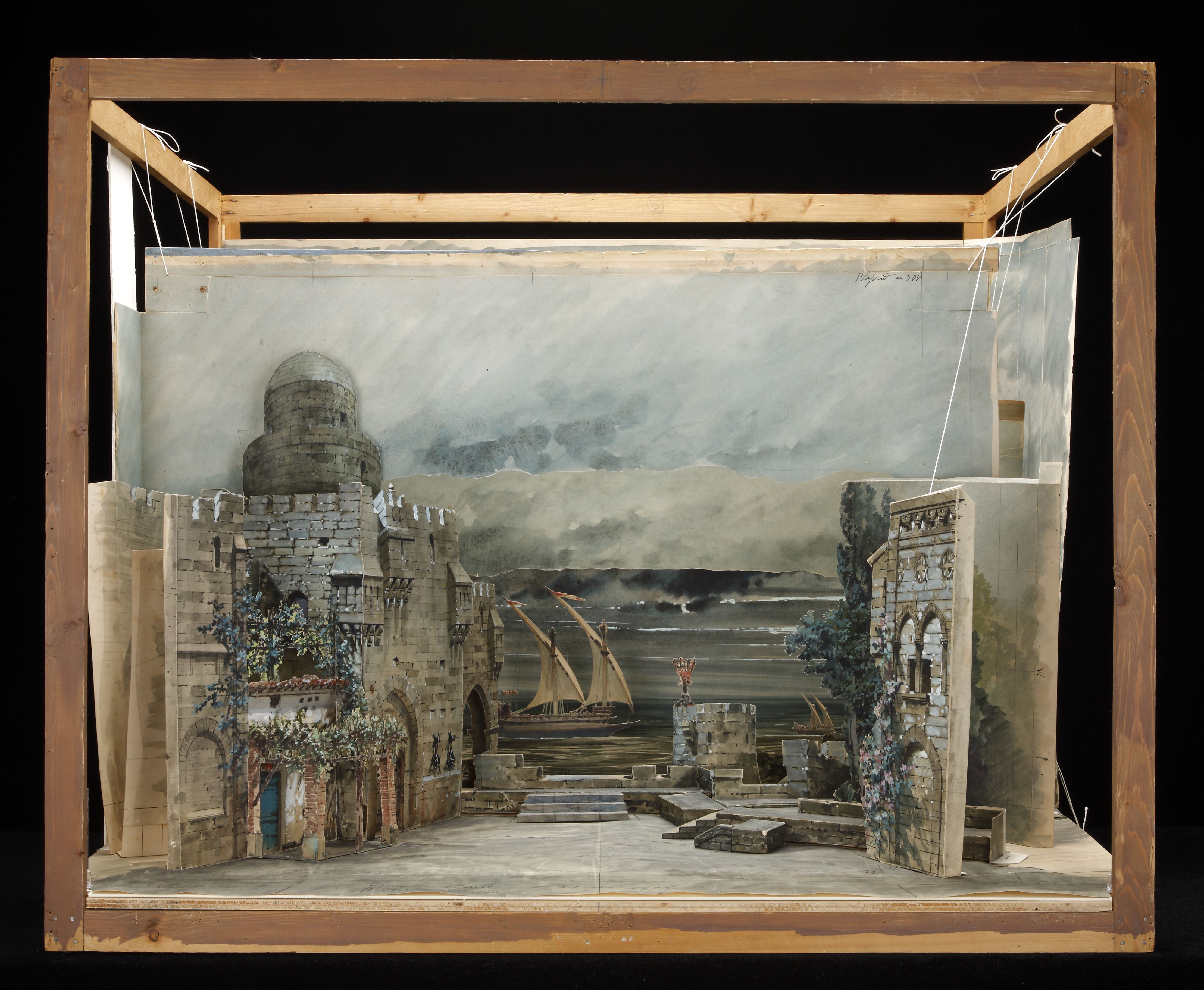|
Prop Design
Property design, commonly known as prop design, is the design of props (theatrical property) for use in theatre, film, television, etc.Making Props, ''How We Make Theatre'', Royal Shakespeare Company Designers of props work in liaison with the costume designers, set designers and sound designers, under the direction of the art director or technical director. The term is also associated with home or interior design. History As with most theater, props originate from Ancient Greece where they would use urns and pebbles to represent voting ballots and ballot boxes during Aeschulyus' ''Eurmidine''. This is possibly the most simplistic prop design as these props were either found objects in the case of the pebbles, or in the case of the urns terracotta or possibly bronze was used to craft them. Shakespeare William Shakespeare ( 23 April 1564 – 23 April 1616) was an English playwright, poet and actor. He is widely regarded as the greatest writer in the English language an ... [...More Info...] [...Related Items...] OR: [Wikipedia] [Google] [Baidu] |
Prop
A prop, formally known as a (theatrical) property, is an object actors use on stage or screen during a performance or screen production. In practical terms, a prop is considered to be anything movable or portable on a stage or a set, distinct from the actors, scenery, costumes, and electrical equipment. This includes handheld items such as books, cups, weapons, and tools that actors interact with during a performance. Props help to create a realistic setting, convey information, or add to the storytelling by showing details about the characters or the environment. Term The earliest known use of the term "properties" in English to refer to stage accessories is in the 1425 CE morality play, '' The Castle of Perseverance''. During the Renaissance in Europe, small acting troupes functioned as cooperatives, pooling resources and dividing any income. Many performers provided their own costumes and small objects needed for performance, hence the term "property" suggesting these ite ... [...More Info...] [...Related Items...] OR: [Wikipedia] [Google] [Baidu] |
Royal Shakespeare Company
The Royal Shakespeare Company (RSC) is a major British theatre company, based in Stratford-upon-Avon, Warwickshire, England. The company employs over 1,000 staff and opens around 20 productions a year. The RSC plays regularly in London, Stratford-upon-Avon, and on tour across the UK and internationally. The company's home is in Stratford-upon-Avon, where it has redeveloped its Royal Shakespeare Theatre, Royal Shakespeare and Swan Theatre (Stratford), Swan theatres as part of a £112.8-million "Transformation" project. The theatres re-opened in November 2010, having closed in 2007. As well as the plays of Shakespeare and his contemporaries, the RSC produces new work from living artists. Company history The early years There have been theatrical performances in Stratford-upon-Avon since at least Shakespeare's day, though the first recorded performance of a play written by Shakespeare himself was in 1746 when Parson Joseph Greene, master of Stratford Grammar School, organise ... [...More Info...] [...Related Items...] OR: [Wikipedia] [Google] [Baidu] |
Costume Designer
A costume designer is a person who designs costumes for a film, stage production or television show. The role of the costume designer is to create the characters' outfits or costumes and balance the scenes with texture and colour, etc. The costume designer works alongside the director, scenic, lighting designer, sound designer, and other creative personnel. The costume designer may also collaborate with a hair stylist, wig master, or makeup artist. In European theatre, the role is different, as the theatre designer usually designs both costume and scenic elements. Designers typically seek to enhance a character's personality, and to create an evolving plot of color, changing social status, or period through the visual design of garments and accessories. They may distort or enhance the body—within the boundaries of the director's vision. The designer must ensure that the designs let the actor move as the role requires. The actor must execute the director's blocking of the pro ... [...More Info...] [...Related Items...] OR: [Wikipedia] [Google] [Baidu] |
Set Designer
Scenic design, also known as stage design or set design, is the creation of scenery for theatrical productions including plays and musicals. The term can also be applied to film and television productions, where it may be referred to as production design. Scenic designers create sets and scenery to support the overall artistic goals of the production. Scenic design is an aspect of scenography, which includes theatrical set design as well as light and sound. Modern scenic designers are increasingly taking on the role of co-creators in the artistic process, shaping not only the physical space of a production but also influencing its blocking, pacing, and tone. As Richard Foreman famously stated, scenic design is a way to "create the world through which you perceive things happening." These designers work closely with the director, playwright, and other creative members of the team to develop a visual concept that complements the narrative and emotional tone of the production. ... [...More Info...] [...Related Items...] OR: [Wikipedia] [Google] [Baidu] |
Sound Designer
In physics, sound is a vibration that propagates as an acoustic wave through a transmission medium such as a gas, liquid or solid. In human physiology and psychology, sound is the ''reception'' of such waves and their ''perception'' by the brain. Only acoustic waves that have frequencies lying between about 20 Hz and 20 kHz, the audio frequency range, elicit an auditory percept in humans. In air at atmospheric pressure, these represent sound waves with wavelengths of to . Sound waves above 20 kHz are known as ultrasound and are not audible to humans. Sound waves below 20 Hz are known as infrasound. Different animal species have varying hearing ranges, allowing some to even hear ultrasounds. Definition Sound is defined as "(a) Oscillation in pressure, stress, particle displacement, particle velocity, etc., propagated in a medium with internal forces (e.g., elastic or viscous), or the superposition of such propagated oscillation. (b) Auditory sensation evo ... [...More Info...] [...Related Items...] OR: [Wikipedia] [Google] [Baidu] |
Art Director
Art director is a title for a variety of similar job functions in theater, advertising, marketing, publishing, fashion, live-action and animated film and television, the Internet, and video games. It is the charge of a sole art director to supervise and unify the vision of an artistic production. In particular, they are in charge of its overall visual appearance and how it communicates visually, stimulates moods, contrasts features, and psychologically appeals to a target audience. The art director makes decisions about visual elements, what artistic style(s) to use, and when to use motion. One of the biggest challenges art directors face is translating desired moods, messages, concepts, and underdeveloped ideas into imagery. In the brainstorming process, art directors, colleagues and clients explore ways the finished piece or scene could look. At times, the art director is responsible for solidifying the vision of the collective imagination while resolving conflicting agendas ... [...More Info...] [...Related Items...] OR: [Wikipedia] [Google] [Baidu] |
Technical Director
A technical director (TD) is usually a senior technical person within e.g. a software company, engineering firm, film studio, theatre company or television studio. They are responsible for overseeing and coordinating all of the technical aspects within the project or organization they are a part of. The title of technical director is used across a wide range of industries such as software development, television and film production, theatre, game development, and live events. While responsibilities may vary between industries, technical directors in general supervise technical staff and guide the technical processes while also collaborating with lead roles to ensure that technical aspects align with the overall goal set in place. For example, in theatre and live productions a technical director will work with scenic designers and directors to draft plans, select materials, and prepare the venue for a both safe and efficient production. In television or film technical directors o ... [...More Info...] [...Related Items...] OR: [Wikipedia] [Google] [Baidu] |
Interior Design
Interior design is the art and science of enhancing the interior of a building to achieve a healthier and more aesthetically pleasing environment for the people using the space. With a keen eye for detail and a Creativity, creative flair, an interior designer is someone who plans, researches, coordinates, and manages such enhancement projects. Interior design is a multifaceted profession that includes conceptual development, space planning, site inspections, programming, research, communicating with the stakeholders of a project, construction management, and execution of the design. History and current terms In the past, interiors were put together instinctively as a part of the process of building.Pile, J., 2003, Interior Design, 3rd edn, Pearson, New Jersey, USA The profession of interior design has been a consequence of the development of society and the complex architecture that has resulted from the development of industrial processes. The pursuit of effective use of ... [...More Info...] [...Related Items...] OR: [Wikipedia] [Google] [Baidu] |
Shakespeare
William Shakespeare ( 23 April 1564 – 23 April 1616) was an English playwright, poet and actor. He is widely regarded as the greatest writer in the English language and the world's pre-eminent dramatist. He is often called England's national poet and the " Bard of Avon" or simply "the Bard". His extant works, including collaborations, consist of some 39 plays, 154 sonnets, three long narrative poems and a few other verses, some of uncertain authorship. His plays have been translated into every major living language and are performed more often than those of any other playwright. Shakespeare remains arguably the most influential writer in the English language, and his works continue to be studied and reinterpreted. Shakespeare was born and raised in Stratford-upon-Avon, Warwickshire. At the age of 18, he married Anne Hathaway, with whom he had three children: Susanna, and twins Hamnet and Judith. Sometime between 1585 and 1592 he began a successful career in Lon ... [...More Info...] [...Related Items...] OR: [Wikipedia] [Google] [Baidu] |
Prop Design
Property design, commonly known as prop design, is the design of props (theatrical property) for use in theatre, film, television, etc.Making Props, ''How We Make Theatre'', Royal Shakespeare Company Designers of props work in liaison with the costume designers, set designers and sound designers, under the direction of the art director or technical director. The term is also associated with home or interior design. History As with most theater, props originate from Ancient Greece where they would use urns and pebbles to represent voting ballots and ballot boxes during Aeschulyus' ''Eurmidine''. This is possibly the most simplistic prop design as these props were either found objects in the case of the pebbles, or in the case of the urns terracotta or possibly bronze was used to craft them. Shakespeare William Shakespeare ( 23 April 1564 – 23 April 1616) was an English playwright, poet and actor. He is widely regarded as the greatest writer in the English language an ... [...More Info...] [...Related Items...] OR: [Wikipedia] [Google] [Baidu] |
Prop Designers
A prop, formally known as a (theatrical) property, is an object actors use on stage or screen during a performance or Filmmaking#Production, screen production. In practical terms, a prop is considered to be anything movable or portable on a stage or a set, distinct from the actors, scenery, costumes, and electrical equipment. This includes handheld items such as books, cups, weapons, and tools that actors interact with during a performance. Props help to create a realistic setting, convey information, or add to the storytelling by showing details about the characters or the environment. Term The earliest known use of the term "properties" in English to refer to stage accessories is in the 1425 CE morality play, ''The Castle of Perseverance''. During the Renaissance in Europe, small acting troupes functioned as cooperatives, pooling resources and dividing any income. Many performers provided their own costumes and small objects needed for performance, hence the term "property" ... [...More Info...] [...Related Items...] OR: [Wikipedia] [Google] [Baidu] |







